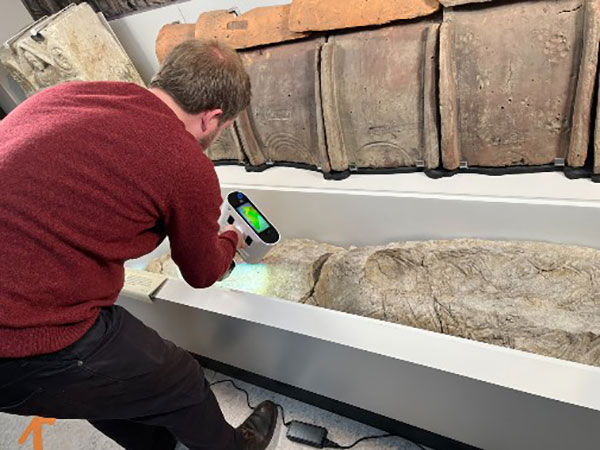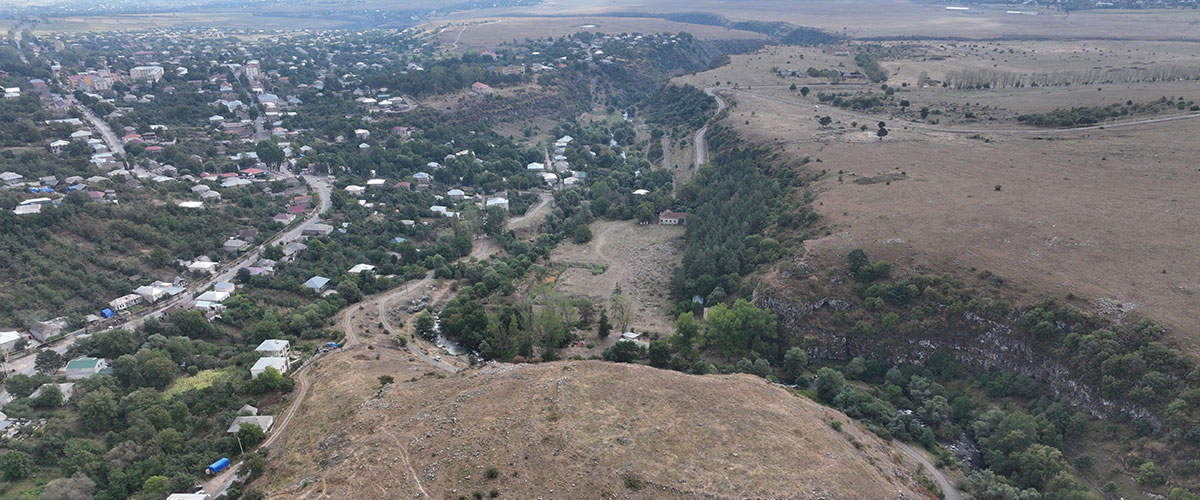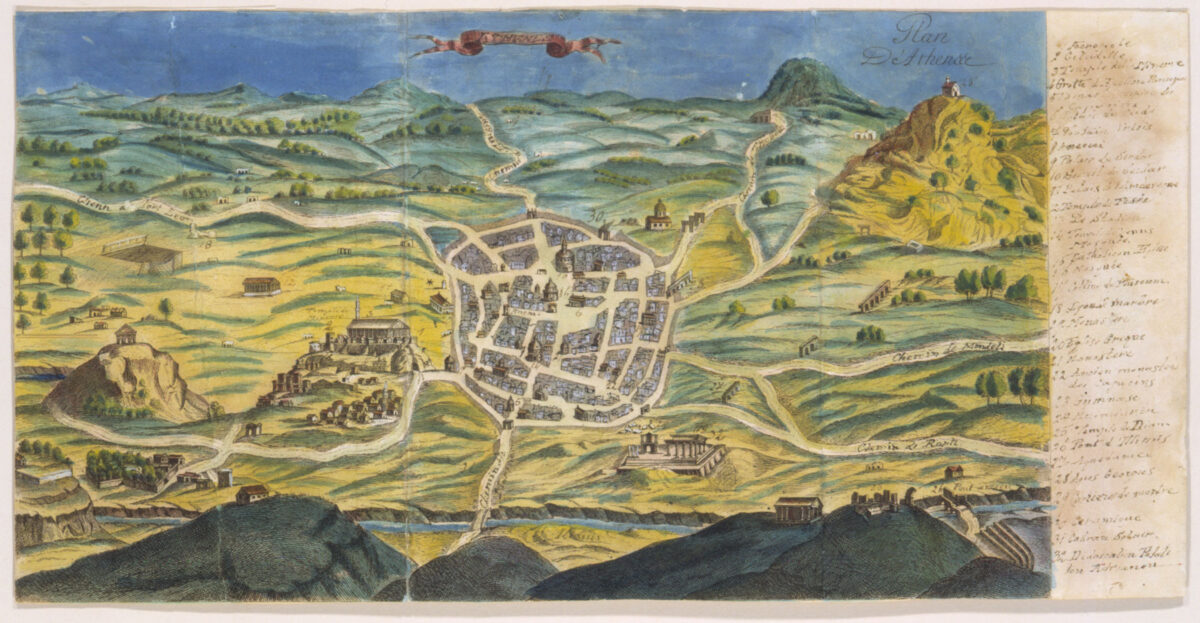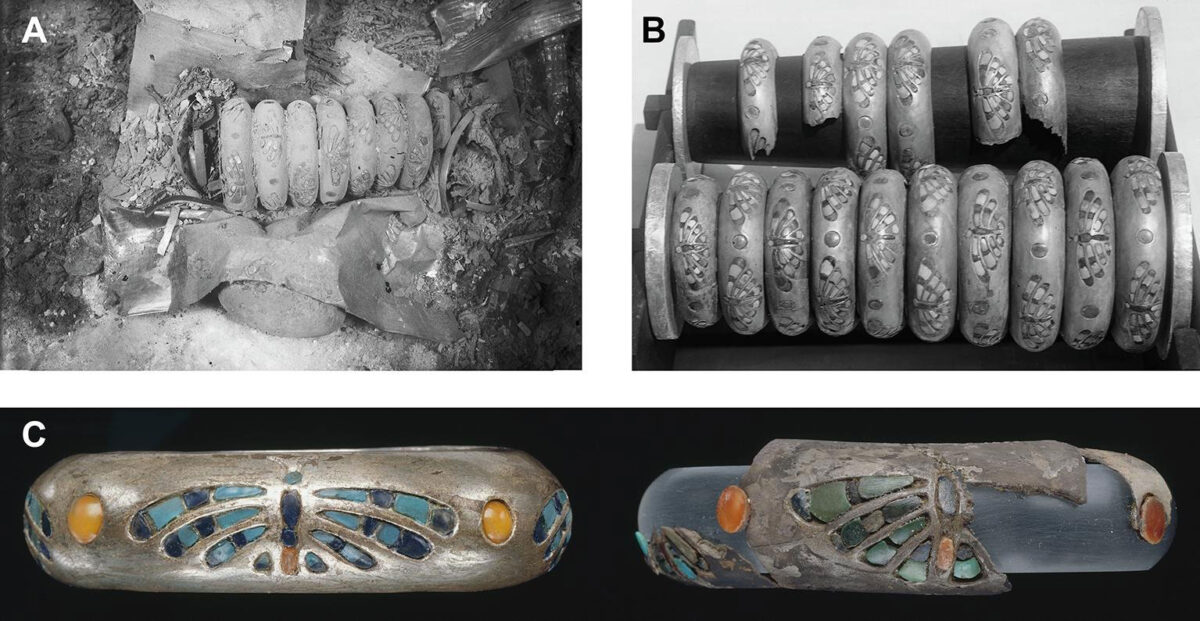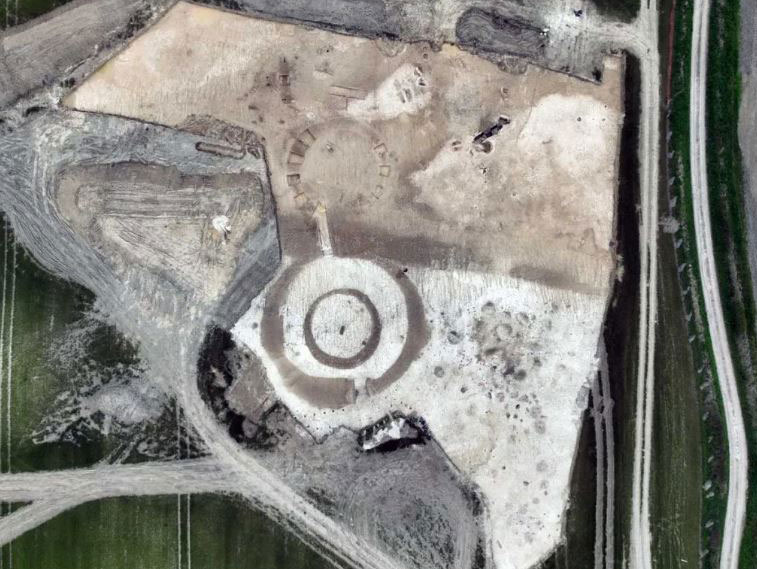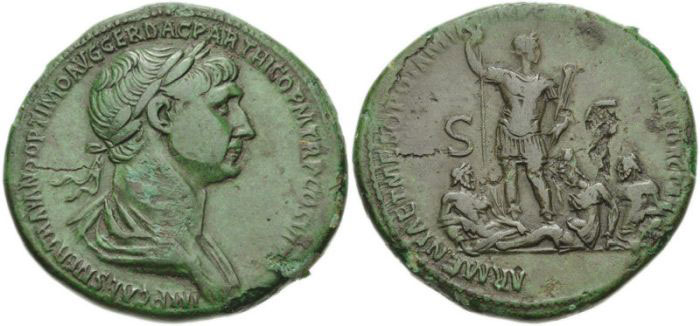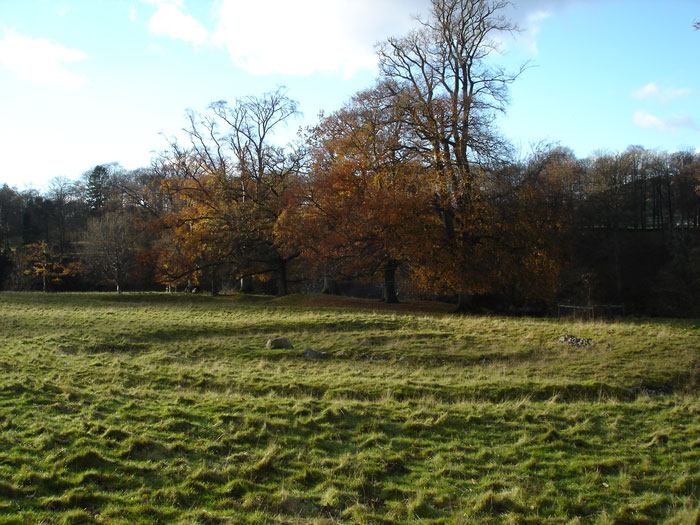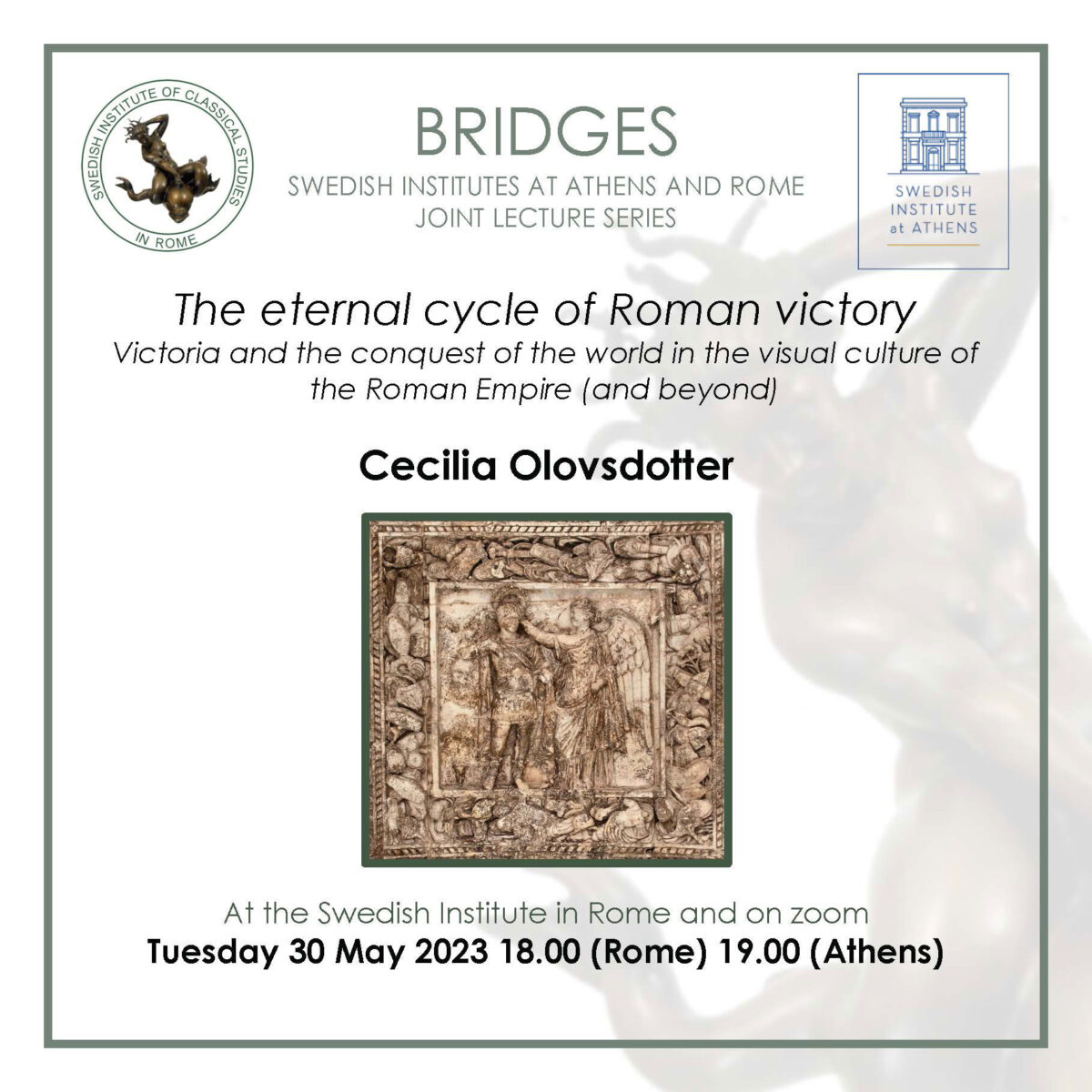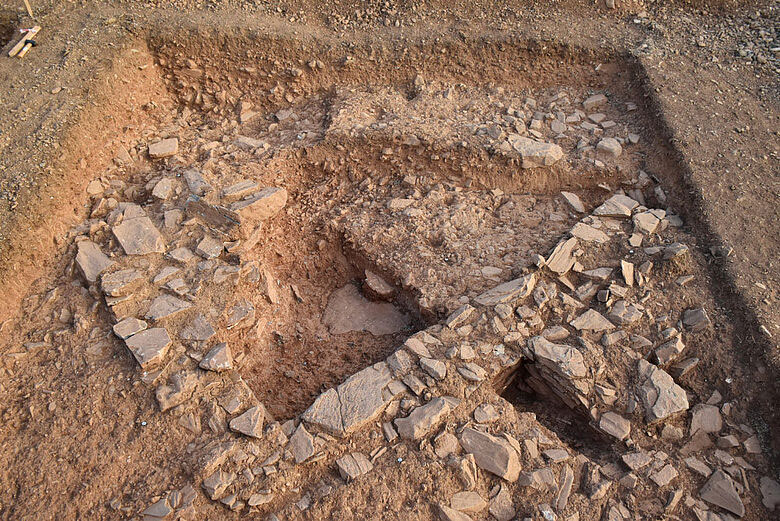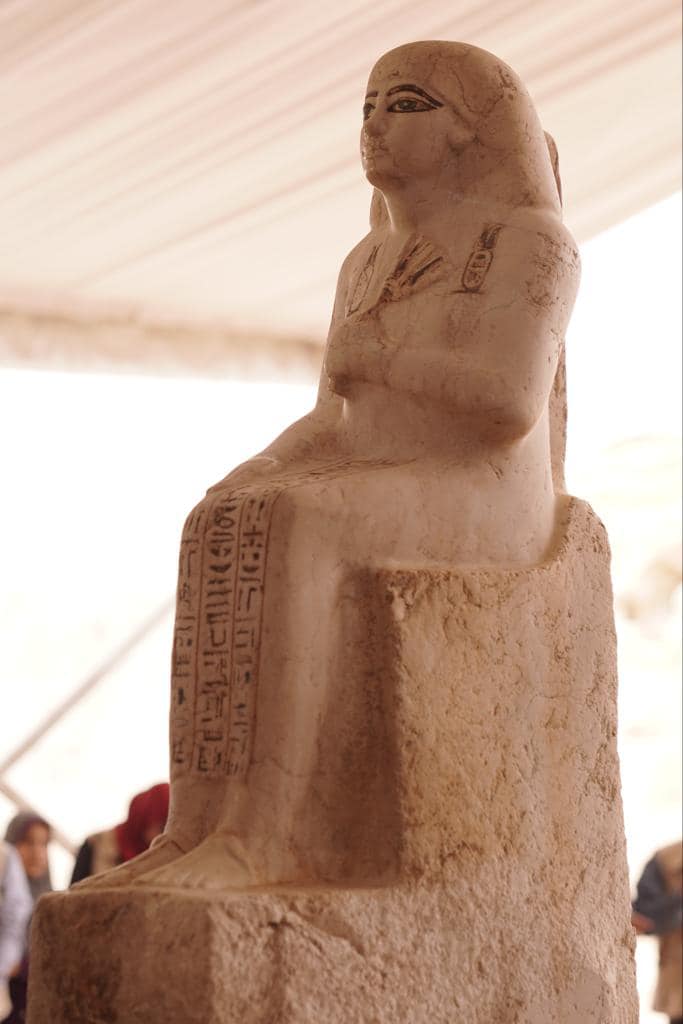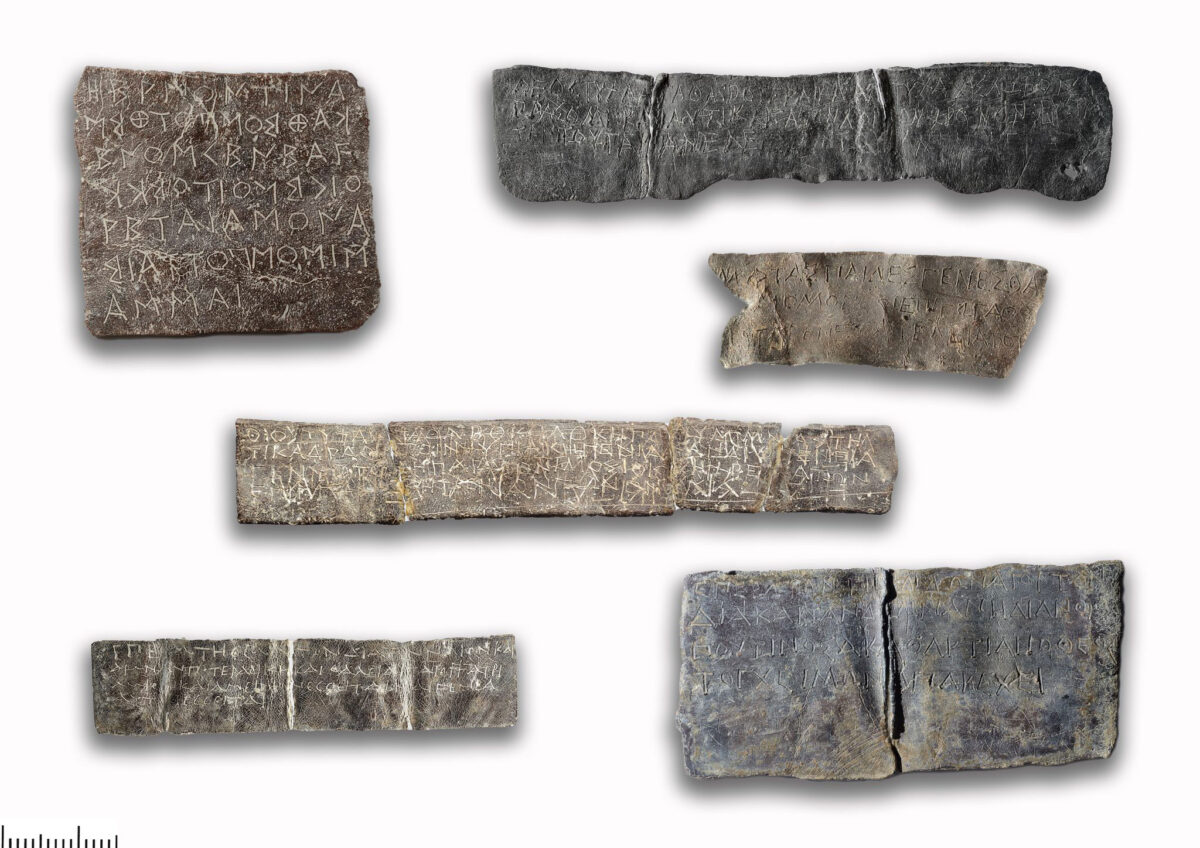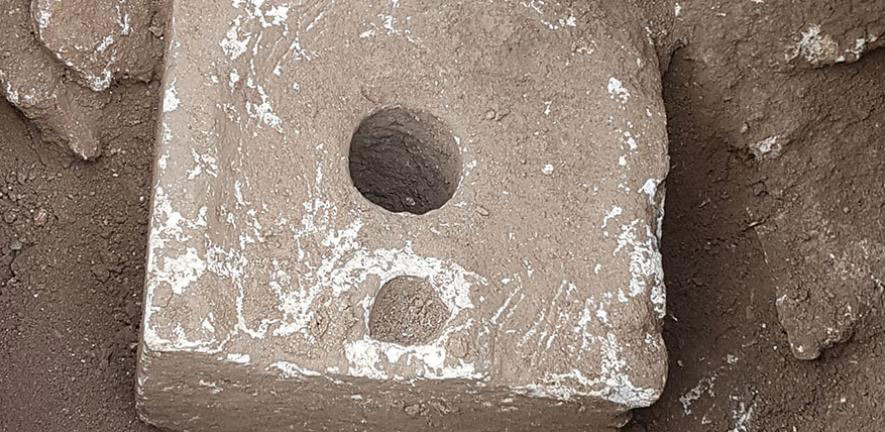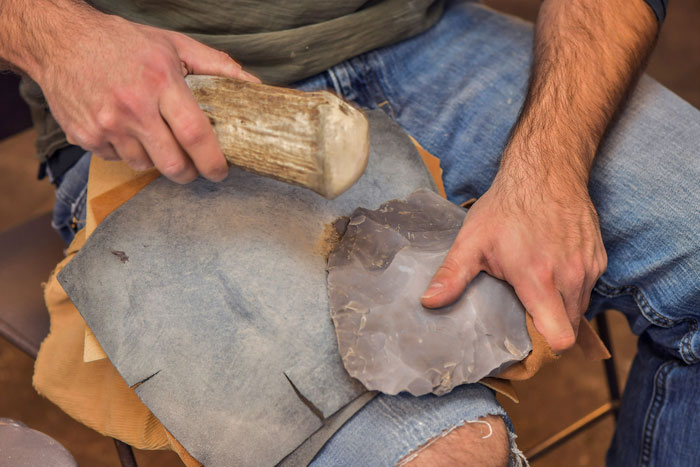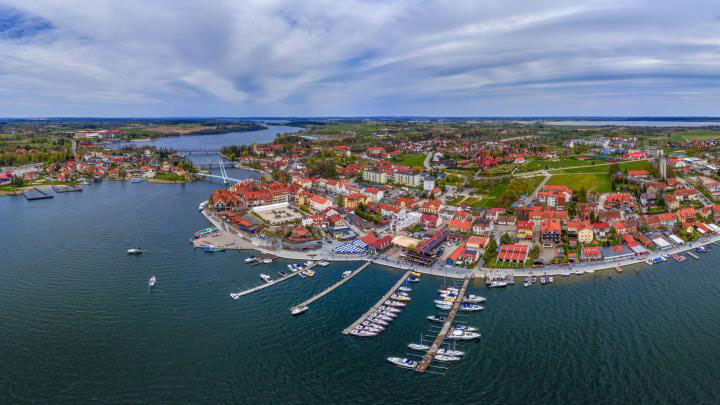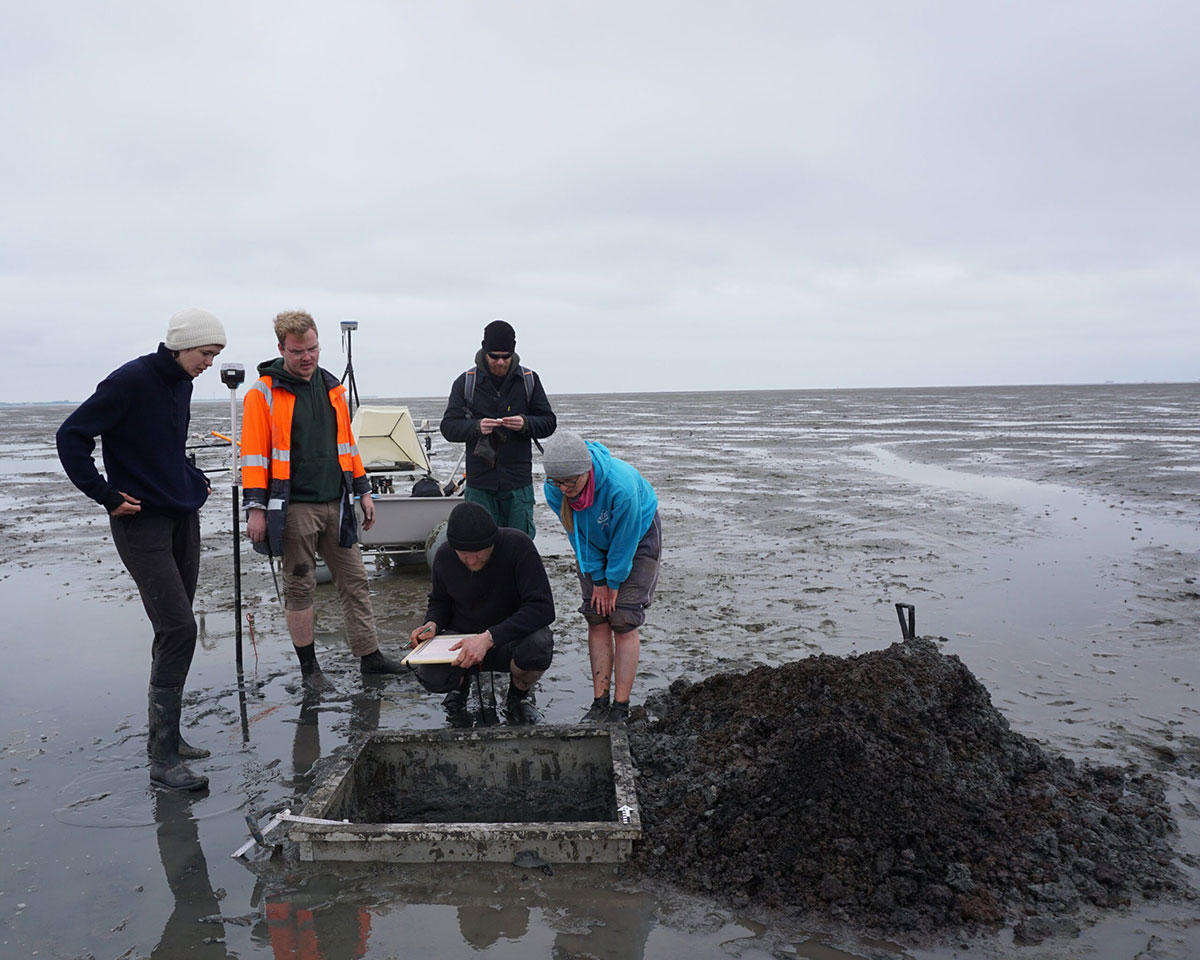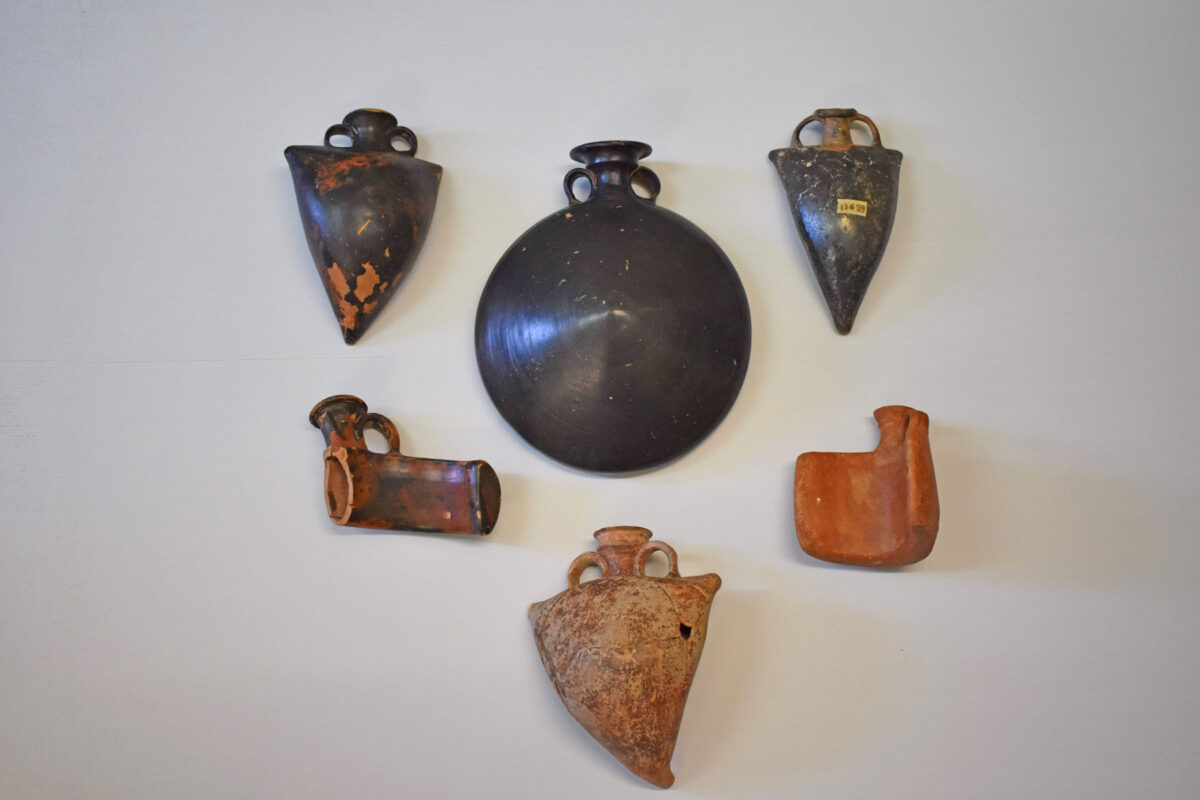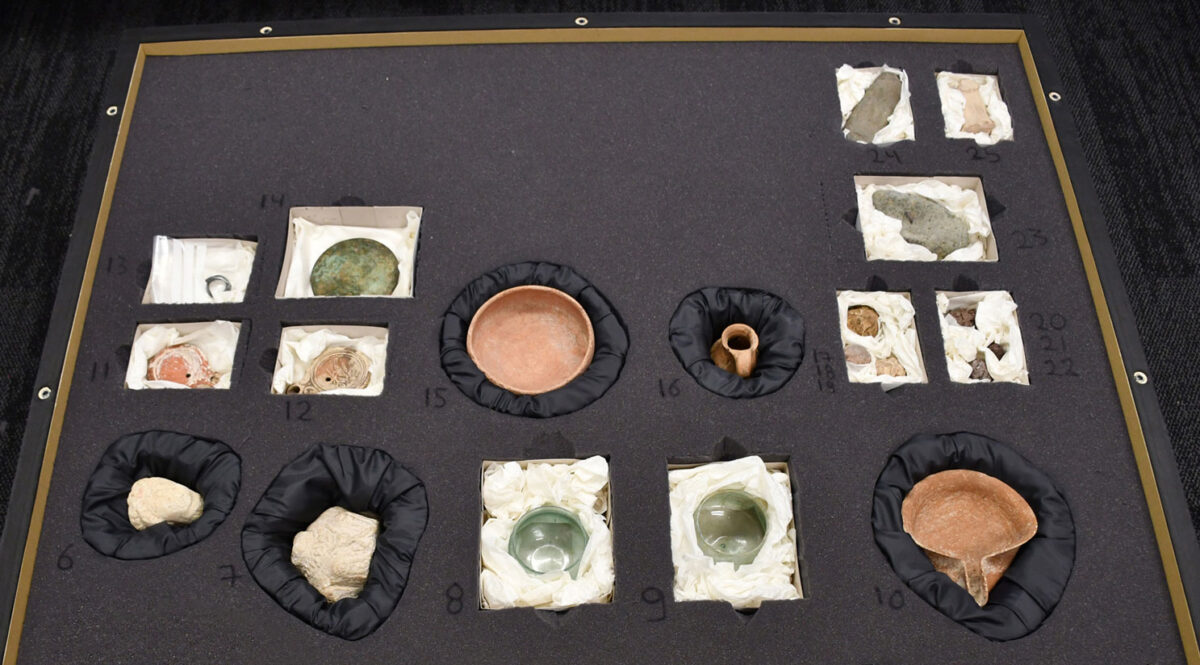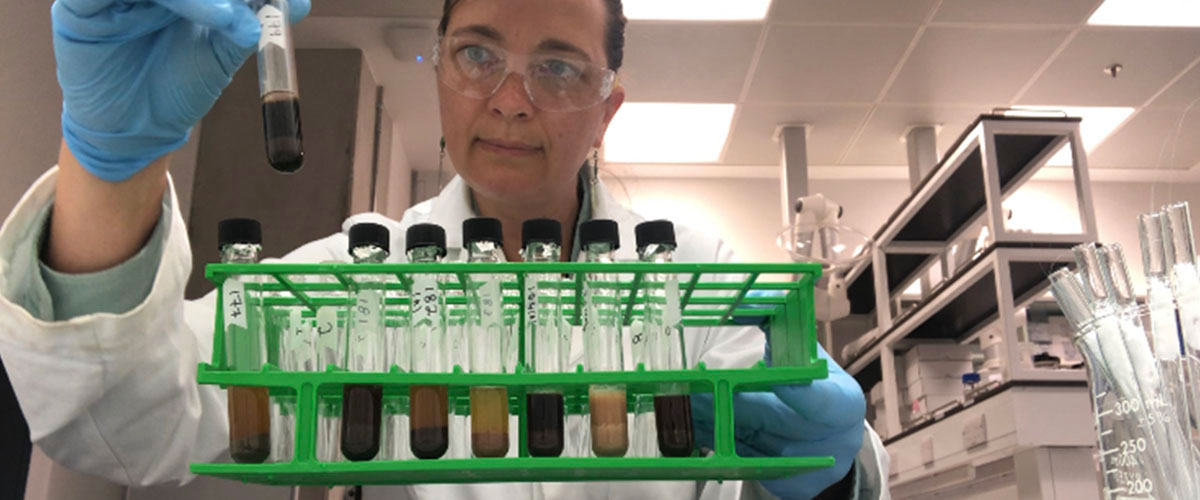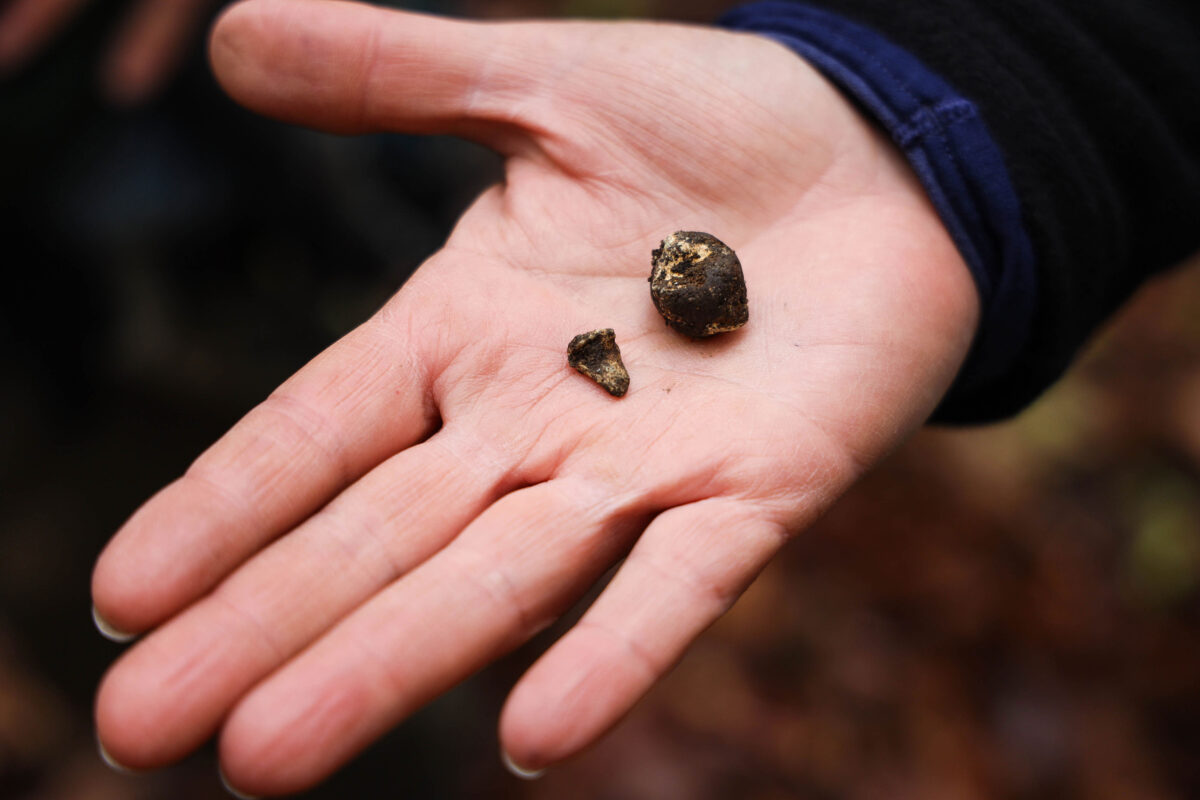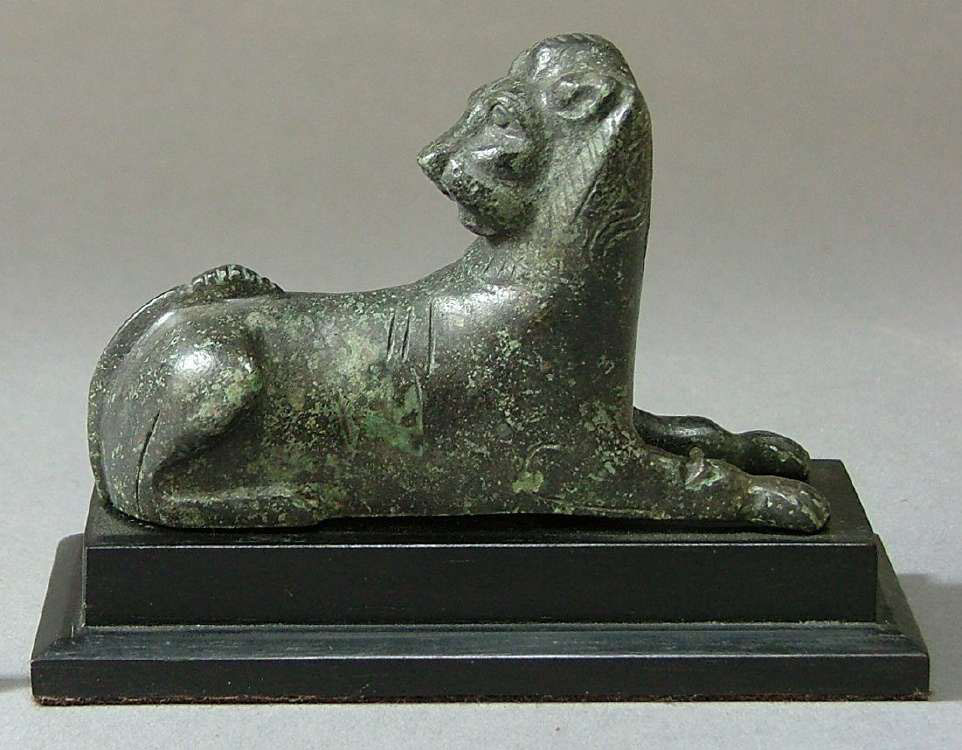3D scans shed new light on mysterious Roman burial practice
Archaeologists in York have used 3D scans to study the Roman burial practice of pouring liquid gypsum over the bodies of adults and children laid to rest in coffins.
Examining societal resilience in the transition from the Bronze to Iron Age
A Cranfield University-led project excavating a fortress site in southern Georgia aims to uncover why communities in this area were more resilient than in some other parts of the world at the end of the Bronze Age.
Exhibition at the Benaki Museum: Hic sunt dracones
An exhibition focusing on historical and social context and the aesthetics of mapping.
Silver on the bracelets of Pharaoh Khufu’s mother came from Greece
Trade between Egypt and the Aegean might have been going stronger than expected during the Pyramid Age.
Uncovering a Bronze Age barrow cemetery
The barrows uncovered at Netherhampton Road had all been levelled by centuries of cultivation and so remain only as ditches.
Legio X Fretensis was stationed at Apsaros in Colchis
In the early 2nd century CE, soldiers from Legio X Fretensis, known for their bloody suppression of Jewish uprisings, were also stationed on the Black Sea.
4,000-year-old plague DNA found – the oldest cases to date in Britain
Researchers at the Francis Crick Institute have identified three 4,000-year-old British cases of Yersinia pestis.
Archaeologists identify Moluccan boats on NT rock art drawings
Archaeologists at Flinders University have identified rare images of Moluccan vessels from Indonesia’s eastern islands in rock art paintings.
BRIDGES: The eternal cycle of Roman victory
Lecture by Cecilia Olovsdotter in the series Bridges, organised by the Swedish Institutes at Athens and Rome.
Archaeological excavations at Agios Ioannis/Vretsia-Roudias, Cyprus
During the 2023 excavation season the team continued investigating the Epipalaeolithic site (Agios Ioannis/Vretsia-Roudias), on the southern part of the Roudias terrace, as well as at the Aceramic Neolithic site.
Unique archaeological find in Thorikos, Greece
Göttingen University research team discovers earliest Iron Age house in Athens and Attica.
New mummification workshops and tombs found in Saqqara
Two new mummification workshops, two tombs, and large groups of artifacts were unearthed during the latest excavation season of an Egyptian mission working in Saqqara for the sixth consecutive year. In detail, the Egyptian archaeological mission led by Dr. Mostafa
Lead tablets of Dodona in the ‘Memory of the World’ of Unesco
The Ephorate of Antiquities of Ioannina is very happy to announce the inscription of the lead tablets of Dodona in the "Memory of the World" of Unesco.
Early toilets reveal dysentery in Old Testament Jerusalem
Study of 2,500-year-old latrines from the biblical Kingdom of Judah shows the ancient faeces within contain Giardia – a parasite that can cause dysentery.
Uncovering Roman Carlisle 2023: Roman artefacts unearthed
Two monumental Roman carved heads have been unearthed on day two of an archaeological dig in Carlisle.
Early humans risked life-threatening flintknapping injuries
“Knapping injuries were a risk past peoples were willing to take,” said Metin I. Eren, Ph.D., associate professor and director of archaeology at Kent State University.
Archaeologists discover traces of prehistoric settlements Mikołajki
Traces of prehistoric and late medieval settlements were discovered during excavations in Mikołajki, the monument conservation services announced Monday.
Researchers discover the church of a sunken medieval trading place
Joint scientific project locates the sunken church of Rungholt in the North Frisian Wadden Sea in Germany.
Ancient hot-water bottles at the National Archaeological Museum
In the late spring of 2023 the Unseen Museum presents the “ancient hot-water bottles”. It is a set of clay vessels for therapeutic use, dating from the end of the 3rd to the 1st century BC.
Repatriation of 36 Cypriot antiquities from Australia
The antiquities include stone tools, pottery and glass vessels, clay lamps, metal objects and stone sculpture.
Earliest evidence of wine consumption in the Americas found in Caribbean
Scientists have found what they believe to be the earliest known evidence of wine drinking in the Americas, inside ceramic artefacts.
Archaeology project uncovers first shots of the French and Indian War
Through a partnership project, several 18th century ballistics and other artifacts were recently uncovered at Jumonville Glen, part of Fort Necessity National Battlefield.
Humans were making fires at least 250,000 years ago in Europe
Early humans in Europe were making and controlling fire at least 50,000 years earlier than previously thought, researchers at Heriot-Watt University in Scotland have found.
Hundreds of looted artifacts of Robin Symes Limited repatriated to Greece
Hundreds of looted artifacts, which were in the possession of Robin Symes Limited, have finally been recovered by the Greek State.
